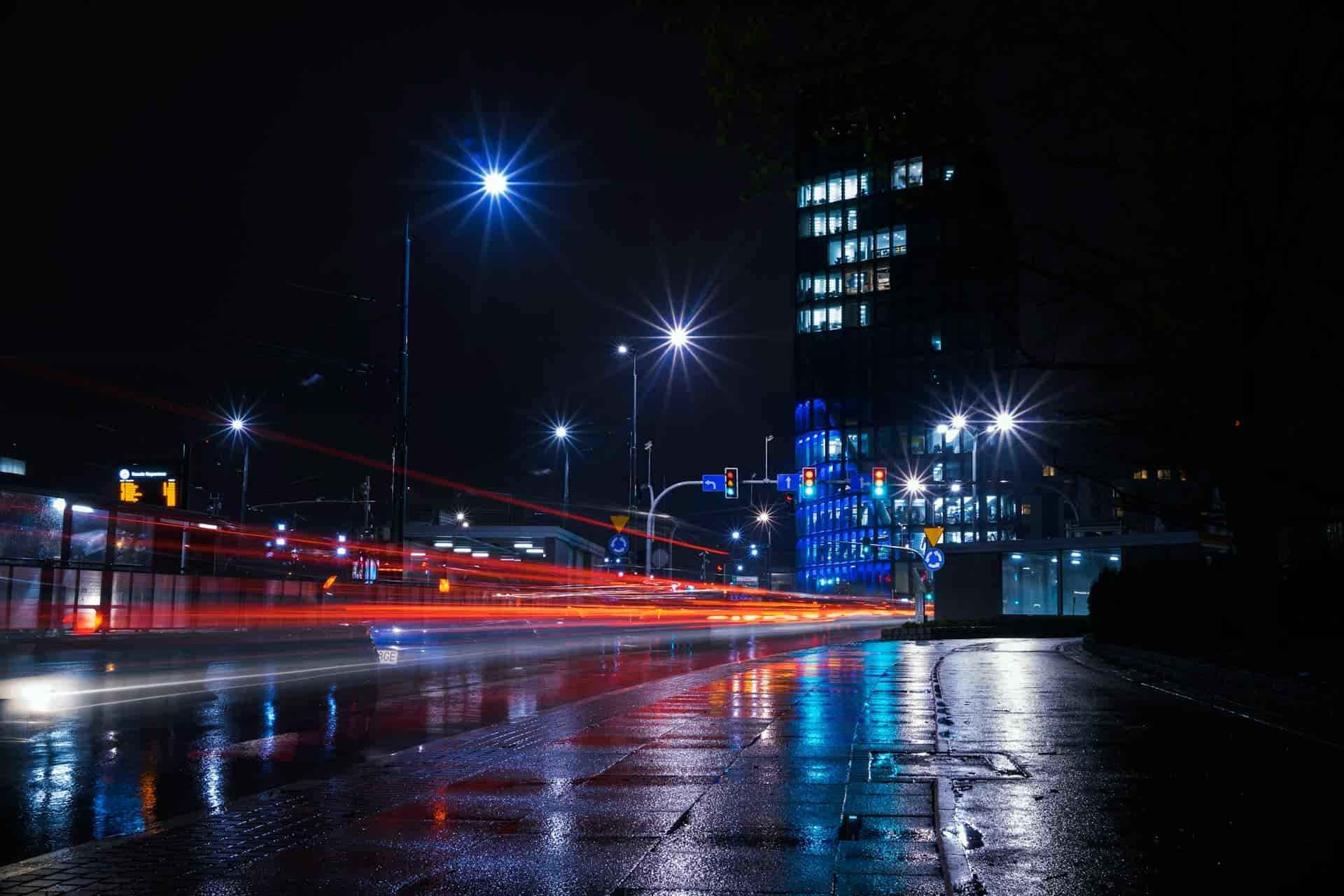In recent years, Australian councils have replaced hundreds of thousands of old sodium-vapour streetlights with networked LED fixtures. This upgrade has reduced energy use by around 60% in many areas, delivering immediate cost and carbon savings.
Beyond dimming and brightening on demand, these “smart” lights report faults automatically — boosting safety and cutting maintenance workloads.
Cutting energy use with LED upgrades
The City of Sydney began its LED rollout in 2009 and has since replaced over 6,500 streetlights — saving about $800,000 a year in electricity and reducing emissions by 2,400 tonnes annually. By upgrading the remaining 9,600 lights, Sydney expects to cut another 3,500 tonnes of carbon each year. LEDs run on roughly 17 watts, compared with 95 watts for older high-pressure sodium lamps, and last up to 20 years.
Across metro Sydney, the SSROC–Ausgrid partnership has converted more than 205,000 fixtures to LEDs, targeting a 62% drop in energy use by 2026 compared to pre-upgrade levels. Federal programs, such as the Community Energy Efficiency Program, have partially funded smart lighting upgrades in regions like south-west Victoria.
These savings translate to millions of dollars back into local council budgets each year, along with significant cuts to electricity demand during peak times.
Enhancing safety through adaptive control
Australian councils report fewer incidents of vandalism and improved perceptions of safety following LED and smart lighting upgrades. Research indicates that white light can be associated with reduced burglary, but the relationship between lighting and crime is complex and context-dependent.
Smart lighting systems also have the potential to support emergency services in the future — for example, by enabling lights to flash or dim in response to incidents. However, this is not yet standard practice in Australia.
Beyond crime prevention, adaptive lighting reduces light pollution. By dimming empty streets outside peak hours and targeting brightness only where needed, councils minimise sky glow and glare. These are the benefits that urban planners say improve both safety and habitat conditions for nocturnal wildlife.
Streamlining maintenance with IoT connectivity
Embedded sensors in each LED fixture monitor voltage, current and lamp health in real time. When a fault arises, the network automatically logs a service ticket with the pole’s GPS location — no more reliance on passer-by reports.
Councils using IoT-driven maintenance systems report significant improvements in response times and a reduction in urgent maintenance callouts. This allows electricians to focus more on preventative works.
The shared network also underpins other smart-city services. Air-quality sensors, traffic counters and EV chargers can attach to the same power-line communications network built for streetlights. This multiuse infrastructure boosts return on investment and fosters a connected urban ecosystem.
Streetlights don’t draw attention until they fail. But in the background, they’re becoming one of the most adaptive technologies in public infrastructure — responding to their surroundings, working longer hours, and quietly supporting safer, better-lit streets.
Engineering is everywhere
Engineering shapes our world, influencing every aspect of our lives: housing, transport, food and drink, technology and communication, art and entertainment, the news media, health, education, finance, and more. Follow this blog series as we continue to explore.
